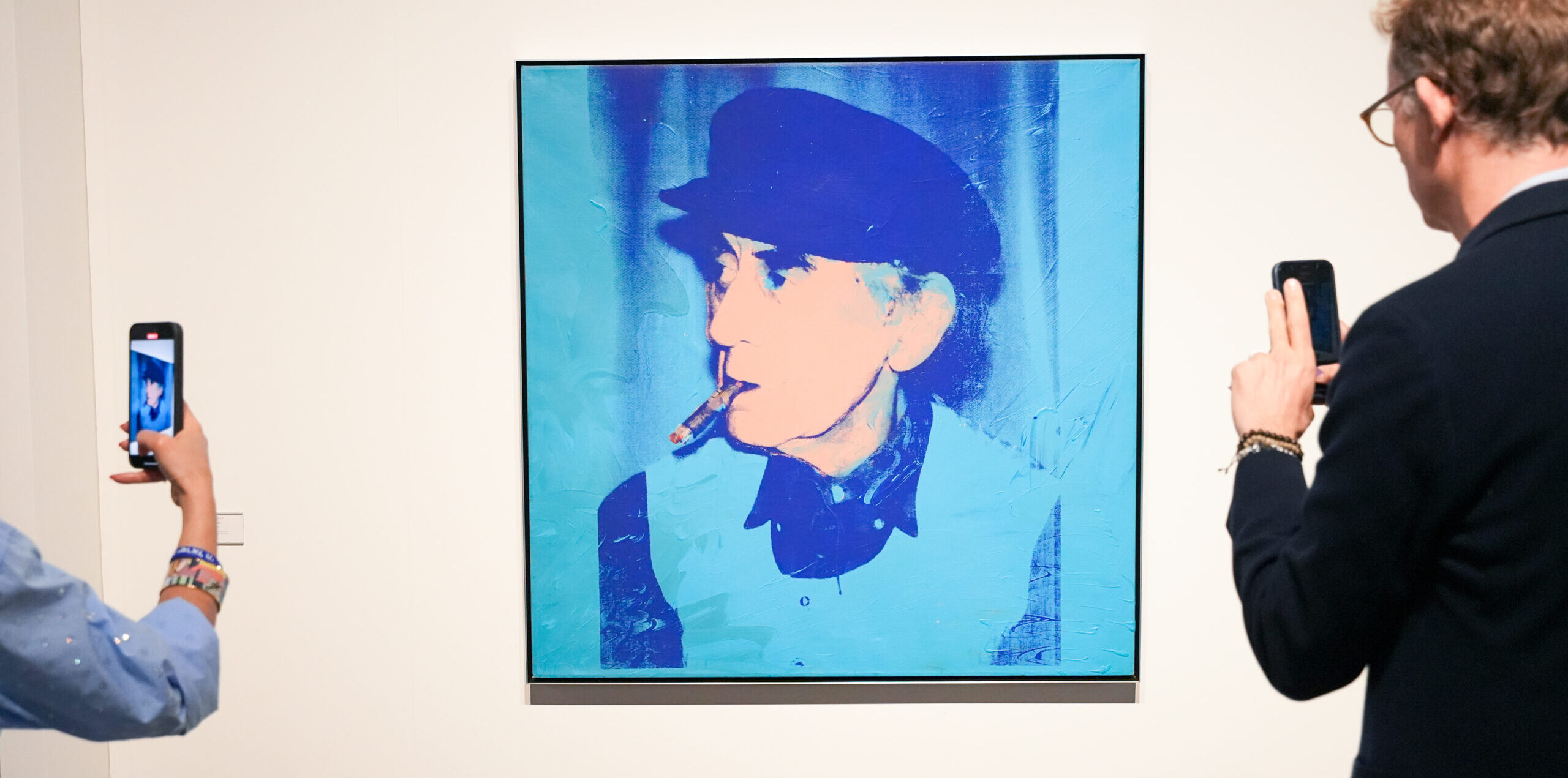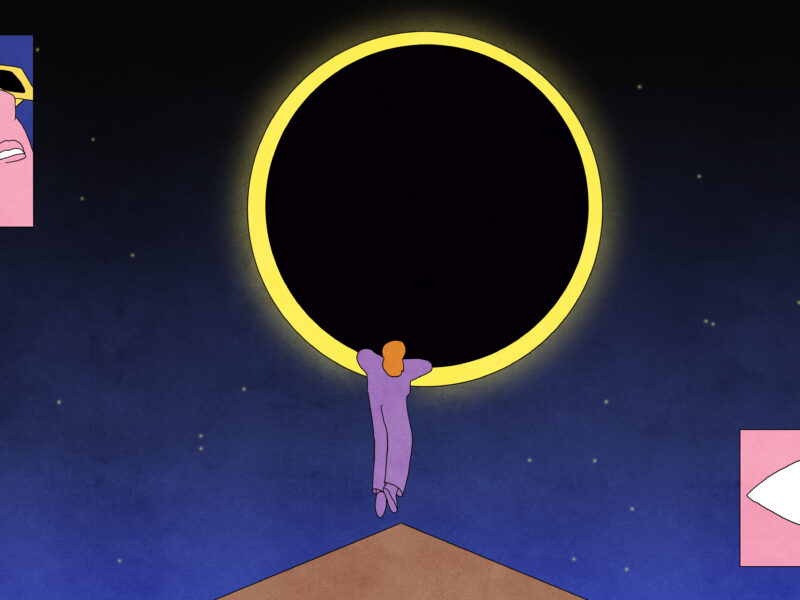On the endless proliferation of art weeks.
“That’s an awful lot of money to go into a shop,” my friend, a creative director and no stranger to event planning, mused as we traded Paris Art Week VIP passes like baseball cards. In a single, whirlwind long weekend last October, we wended around the aisles of no fewer than five art fairs: The Paris Internationale, THÉMA, Design Miami/, Offscreen, and, the main attraction, Paris+ par Art Basel, having its second-ever iteration in France. Had we not shared and swapped those passes, we each would have been out upwards of €500, to say nothing of the fact that some of the passes were invite-only—priceless bits of currency during Art Week, where €500 is more or less considered pocket change. It is a rigamarole that would be repeated in another couple of months, at Basel’s next iteration, which would bear a striking resemblance to the version we’d seen in Paris. Yet it wasn’t so long ago that Basel just stayed put in Basel.
Before we go any further, “Basel” here refers to Art Basel, an art fair held in Basel, Switzerland each June. But these days, in addition to Paris, Basel is also in Miami, where there was another art fair earlier this month, and in Hong Kong, where there will be another fair in March. Indeed, like the British Empire, the sun never sets on Basel, a town of 171,000 otherwise known principally as the home of Roger Federer and Erasmus. And Basel isn’t alone: Miami’s Art Week empire has expanded, too. The sinking tax haven—where, Lenny Bruce once said, “neon goes to die”—has its own Basel, Design Miami/, which now, in addition to Paris, meanders annually to Shanghai and, aber natürlich, Basel itself. At first glance, Basel (the city) and Miami (the city) might not seem to have much else in common, except for these never-ending art fairs—and, of course, the money required to go into the proverbial shop.
Why should any of this matter? Why should we care if largely the same group of egregious polluters—art collectors with private jets, influencers, hangers-on, DJs of inscrutable provenance—stomp their carbon footprints across continents to attend art fairs perennially named after the city they just left behind? As the old saw goes, it’s always five o’clock somewhere—and now, apparently, Art Week, too. Globally, Art Week now happens somewhere about as frequently as Independence from the British Empire is celebrated. And while the world that populates it might seem insular and frivolous to the point of farce, the sort of top-down, endlessly replicating model of speculation and monetization it represents should worry all of us: Those art fair carbon footprints are a garish harbinger of the death of a creative class, and of a wealth gap that will likely never close.
Like Fashion Week, which now takes place approximately 30% of the year, Art Week is inhabited by its own roving “world”—quite literally, a moveable feast—but the homogeneity of the art world is more profound than its cast of characters might suggest. Contemporary art, like high-end fashion, is largely the same in every major city on the planet, thanks in part to the strangle-hold of blue-chip galleries like Gagosian and Zwirner. None of it is really about art anymore. It’s about luxury. It’s about branding.
The point of all this globetrotting is the maintenance of a robust marketplace—and, at least as importantly, the very flashy appearance of one. The 2023 Art Basel and UBS Art Market Report makes for some eye-watering reading:
Global art sales increased by 3% year-on-year to an estimated $67.8 billion, bringing the market higher than its pre-pandemic level in 2019…[but] there was also divergence in market segments, with the highest end continuing to be the driver for growth. In the auction sector, the highest-priced works of over $10 million were the only segment to show an increase on aggregate, while in the dealer sector, those at the higher end performed significantly better than their peers in the lower tiers. These trends continued to dampen any hopes of significant restructuring of old hierarchies in the post-pandemic art market, and sales continued to display the more familiar pattern of outperformance at the high end, buoying aggregate values but creating a denser concentration at the top.
Perhaps these numbers account for some of the manic laughter in the Coen Brothers’ The Big Lebowski, when video artist Knox Harrington picks up the phone and announces to Julianne Moore’s Maude, “It’s Sandro, about Biennale.” And it’s only gotten crazier in the 25 years since the film came out. The art market is still behind luxury fashion’s $111.5 billion annual take, but not by all that much, especially when one considers how many fewer galleries, art fairs, and auction houses there are in the world, as opposed to the sheer number of luxury fashion stores and online platforms.
This wasn’t always the case. We have come a long way from the progenitor of the contemporary art fair, the so-called 1913 Armory Show, an exhibit designed to introduce Americans to Fauvism and Cubism, and artists not yet well known in the US, including Henri Matisse and Pablo Picasso. The show was a watershed cultural moment, modernizing and commercializing an outdated European salon model. It also could only have happened in America. Originally hatched during the Royal Academy shows of the 17th and 18th centuries, the salon model had already matured into something more commercial during the 19th century, commensurate with the acquisitive tastes and expansive budgets born of the Industrial Revolution. Presciently, during this era, British art dealer Joseph Duveen observed, “Europe has a great deal of art, and America has a great deal of money.”
A total of 87,000 New Yorkers saw the show before it decamped to Chicago. It heralded the ascendancy of art that pushed beyond the academic and the staid—where concepts of beauty and even the purpose of artistic expression were called into question. (Fashion Week would not come to the US until 1943.) At the New York fair, Marcel Duchamp’s “Nude Descending a Staircase” sold for $324, or $10,172, adjusted for inflation. At Art Basel (Basel) this past June, one of Louise Bourgeois’ “spider” sculptures sold for $22.5 million on the first day of VIP previews.
So what caused the over 2,200% increase? To quote James Carville, “It’s the economy, stupid.” The percentage, while jaw-dropping, mirrors others with which we are all too familiar, such as executive compensation and urban real estate. Quite simply, it’s yet another manifestation of an incomprehensibly large and probably irreversible wealth gap. However, the art world cut a slightly different economic curve. After the contemporary art market crashed in the early 1990s—slumping in a series of scandals along with the rest of the country—large and institutional collectors shunned the sector. But by century’s end, it had begun creeping back, after the Clinton Years (featuring a star turn by none other than Carville) saw the first dot-com boom and bust: Not incidentally, works of art, beyond serving as status markers, are also fabulous places to hide and launder money. At around the same time, auction prices went up in late 19th-century and 20th-century art to unprecedented numbers.
It wasn’t until 2002 that Art Basel, an industry staple on the calendar since 1970, launched a fair in Miami, in part to nudge contemporary art back into the spotlight, financially speaking. (Some also credit the establishment of new major contemporary art institutions, like the Tate Modern in 2000, with the comeback.) And it worked. This resurgence of the market was so robust that it survived even the 2008 crash largely unscathed, reaching new heights with the emergence of an online market in the 2010s. The fair phenomenon only grew from there, naturally migrating to Asia as new billionaires were minted amid China’s boom—just as Joseph Duveen might have predicted.
Which brings us back to Art Week, the brand. Luxury is predicated on branding, and branding must maintain a consistency that, when achieved, is known as an “identity”—a handy euphemism for what Walter Benjamin famously defined as the aura of a work of art: equal parts authenticity (or uniqueness) and locale (within a physical space or culture). In fashion, Chanel sports its iconic chains and camellias; in contemporary art, a Gerhard Richter canvas damn well better look like a Richter. This identity, regardless of product, fulfills the Benjaminian equation: authenticity + locale = aura. The market then determines what price tag it can bear.
In 2023, the proliferation of locales (via the cultural and commercial context of an art fair) and the authenticity of the work it draws (a unique yet consistent group of A-list galleries and artists) creates an aura for the art world to the tune of many billions of dollars, if UBS is to be believed. To merit that sort of return on investment, the commodity must be recognizable; its identity, or aura, must be strong. This is attained through predictability, which—you probably don’t need Walter Benjamin to tell you—is rather inimical to artistic expression. And the easiest way to make the aura predictable is by an onslaught of art fairs, with little time between them for artists to actually create—well, art.
No matter what way you see it, there is great currency in this homogeneity for those who can afford to trade in it. Ultimately, the art, much like the people at each of the art fairs, is pretty much the same. Commodification demands it. Fittingly, the VIP attendees often turn out in regalia from the same dozen or so luxury fashion houses whose brick-and-mortar presence signifies a wealthy neighborhood anywhere in the world. As for the fair-goers, the barrier to entry is high at these events, too. Aside from travel, a gallery must put up around $20,000 for even a medium-sized booth at Art Basel and even more for shipping fees—and do so at multiple fairs per year. And you probably don’t need Karl Marx or Ronald Reagan to tell you very little of this money is trickling down to the artists themselves. It’s a content farm, with souvenir tote bags and champagne. (And, as my companion at Paris Art Week likes to note, the champagne sponsor for the art fairs is almost always the aptly named Ruinart.)
This exhausting, transcontinental treadmill has led to a contemporary art market that varies little fair to fair. How could it not? Who would spend all those millions on an unknown commodity they won’t be able to offload down the line? What kind of an investment would that be? The art world has never shied away from being self-referential, but a market is iterative. If one were dropped blindfolded into one of these art fairs, the chance of being able to tell in what city or at what event they had found themselves would be a longshot.
And that’s the point: Basel is everywhere. It’s all the same.



